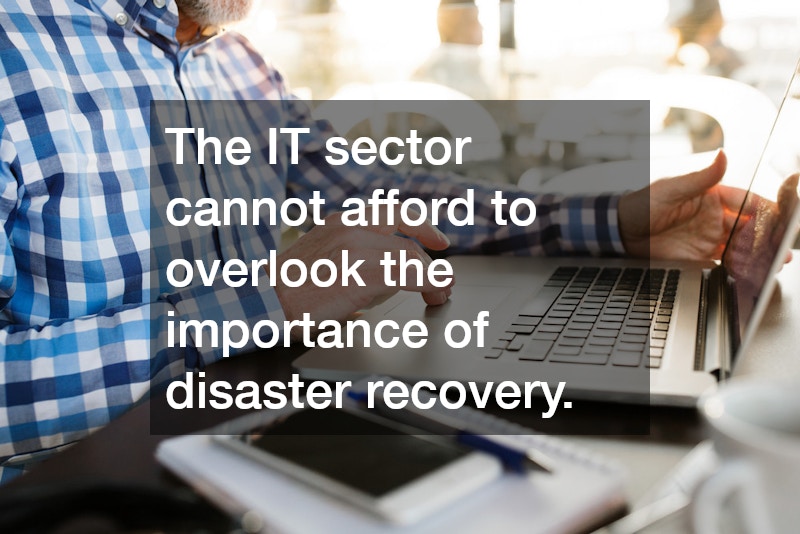In today’s digital world, businesses of all sizes rely heavily on technology to manage operations, store data, and communicate. This dependency makes the IT sector particularly vulnerable to disasters, whether natural or human-made. A sudden system failure, cyberattack, or data breach can disrupt operations, compromise sensitive data, and even threaten the survival of an organization. Disaster recovery backup services play a pivotal role in mitigating these risks and ensuring business continuity. This blog explores why disaster recovery is essential for the IT sector and how it can safeguard businesses from unexpected disruptions.
The Growing Threat Landscape
The IT sector faces a multitude of threats that can disrupt operations and compromise data integrity. These include:
- Cyberattacks: Ransomware, phishing, and other malicious attacks have surged in recent years, targeting businesses of all sizes. Cybercriminals often aim to encrypt or steal data, demanding ransom for its release.
- Natural Disasters: Hurricanes, earthquakes, floods, and wildfires can destroy physical infrastructure, making systems and data inaccessible.
- Human Error: Unintentional mistakes, such as accidental file deletion or misconfigured systems, can result in significant data loss.
- Hardware Failures: Aging or faulty equipment can lead to sudden downtime and data corruption.
Given these risks, having a robust disaster recovery plan is no longer optional but essential.
Understanding Disaster Recovery
Disaster recovery is the process of restoring IT systems, applications, and data to normal operation following a disruption. It is a critical component of a broader business continuity strategy, focusing on minimizing downtime and data loss. Disaster recovery backup services specifically address the need to store and restore data safely and efficiently.
Key elements of disaster recovery include:
- Data Backup: Regularly backing up data ensures that a copy of critical information is available in case the original is lost or compromised.
- Recovery Time Objective (RTO): This defines how quickly systems must be restored to minimize disruption.
- Recovery Point Objective (RPO): This determines how much data loss is acceptable, guiding backup frequency.
- Testing and Validation: Regularly testing the disaster recovery plan ensures its effectiveness during an actual event.
Why Disaster Recovery Backup Services Are Vital
1. Ensuring Business Continuity
For IT-dependent businesses, even a few hours of downtime can lead to lost revenue, missed opportunities, and damaged reputation. Disaster recovery backup services provide a safety net, allowing organizations to recover quickly and resume normal operations.
2. Protecting Sensitive Data
Data is one of the most valuable assets for any business. Losing it to a cyberattack or hardware failure can be catastrophic. Backup services ensure that sensitive information is securely stored and easily retrievable in emergencies.
3. Compliance with Regulations
Many industries, including finance and healthcare, are governed by strict data protection regulations. Failing to protect customer information or recover data promptly can result in hefty fines and legal repercussions. Disaster recovery solutions help businesses meet these compliance requirements.
4. Mitigating Financial Losses
The financial impact of a disaster can be staggering, encompassing lost revenue, recovery costs, and potential lawsuits. Investing in disaster recovery backup services is a cost-effective way to minimize these expenses.
5. Building Customer Trust
Customers expect businesses to protect their data and provide uninterrupted services. A well-executed disaster recovery plan demonstrates a company’s commitment to reliability and security, fostering trust and loyalty.
Features to Look for in Disaster Recovery Backup Services
When selecting a disaster recovery provider, it’s essential to evaluate their offerings carefully. Key features to consider include:
- Scalability: The service should accommodate your business’s growing data needs.
- Automation: Automated backups reduce the risk of human error and ensure data is consistently protected.
- Security: Look for robust encryption and compliance with industry standards to safeguard your data.
- Speed: The provider should offer fast recovery times to minimize downtime.
- Support: 24/7 customer support ensures assistance is available whenever needed.
Real-World Applications of Disaster Recovery
Disaster recovery backup services have proven their value in numerous real-world scenarios:
- Ransomware Attacks: Businesses affected by ransomware were able to restore operations without paying ransom due to their robust backup systems.
- Hurricane Damage: Companies in hurricane-prone areas avoided significant downtime by relying on cloud-based disaster recovery solutions.
- Data Center Outages: Organizations with disaster recovery plans seamlessly switched to backup systems, maintaining productivity during outages.
Investing in a Secure Future
The IT sector cannot afford to overlook the importance of disaster recovery. As cyber threats become more sophisticated and natural disasters more frequent, having a reliable disaster recovery solution is critical. Disaster recovery backup services not only protect businesses from data loss but also ensure they can weather any storm with minimal disruption.
By investing in disaster recovery, IT companies can safeguard their operations, maintain customer trust, and stay ahead in an increasingly competitive landscape. Don’t wait for a disaster to strike—plan for it today and secure your organization’s future.
.


